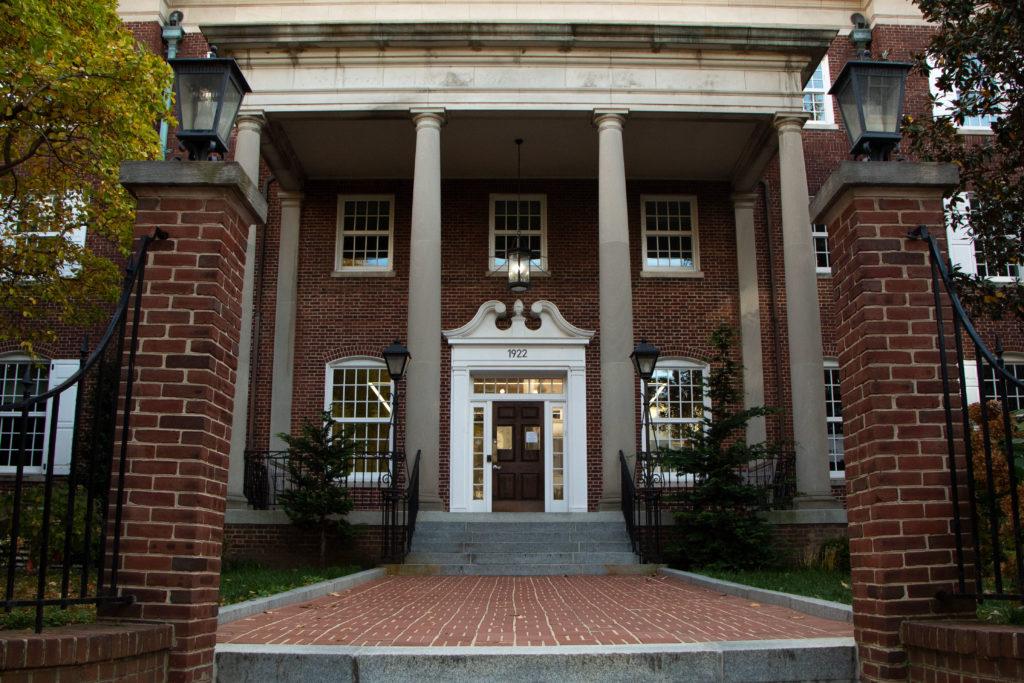The decision last week to move the health and counseling centers to the middle of campus will now likely set off rounds of budget increases and new hires as the University anticipates a surge in appointments.
With appointments already in high demand at the University Counseling Center and Student Health Service, GW has slowly boosted funding for new hires and programs. Dean of Student Affairs Peter Konwerski said both centers will likely need another infusion of money to bring in new clinicians after the centers gain several hundred square feet in their new Marvin Center location.
“We’ve been spending a lot of time looking at the anticipated increase in volume,” Konwerski said in an interview. “We’ve gotten a lot of support from the provost and president. We’re planning to make sure we’re really prepared for the high traffic in both spaces.”
He said the offices, which will be jointly run by UCC director Silvio Weisner and SHS director Isabel Goldenberg after moving next spring, will also need an updated call-in appointment system to accommodate the demand. Konwerski said he did not yet know what funding and staffing increases it would need.
After months of student lobbying to make the services more accessible, the University announced the centers would move into the top two floors of the GW bookstore last week. Student Association leaders have said the offices’ respective K Street locations, which are about a half-mile from GW’s largest freshmen residence hall, deter students from seeking help.
Weisner said the number of appointment requests at the counseling center has grown by about a quarter each of the last two years, and he said he expects even more requests next year. Walk-in requests also skyrocketed nearly 200 percent over the last year.
He had told the Health and Wellness Task Force, he said, that the center needs at least six more offices for new clinicians to hold individual sessions, another large room to hold group sessions and a larger waiting room to accommodate the flood of walk-ins.
Now, the counseling center’s staff of 18 barely fits into its largest room for meetings. Its space includes about 18 private rooms, a waiting room that fits about 10 students and a larger group space for about 20 students.
GW’s counseling staff is smaller than those at similar schools such as New York University and the University of Southern California, which boast 46 and 31 staff members, respectively. Northwestern University has 31 staffers, while Duke University has 25.
Weisner said they will also look into changing the walk-in structure, increasing group counseling options and increasing the number of doctors in its referral network.
Julia Susuni, president of the Student Association who led lobbying efforts to move the offices to campus, said higher traffic would be a sign students are more aware of what resources they have – improving campus health overall.
The SA “will continue to engage in a conversation with the administration to make sure that they are equipped to handle the traffic they see in the Marvin Center, from both a staffing and a budgetary perspective,” Susuni said.
Goldenberg, the head doctor at SHS, said the new location would give the center more opportunities for outreach and prevention. For example, she said, the larger location would allow more students to volunteer at SHS’s free monthly HIV testing clinics.
SHS sees about 22,000 visits each year. The center has moved three times in the past 25 years, most recently in 2006 when it moved from the basement of the Medical Faculty Associates building to K Street to give anonymity to students and add space.
SHS and UCC’s office space leases are likely up soon, but officials have declined repeatedly to comment on when the leases would need to be renewed.
-Eva Palmer contributed to this report.








